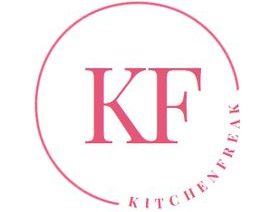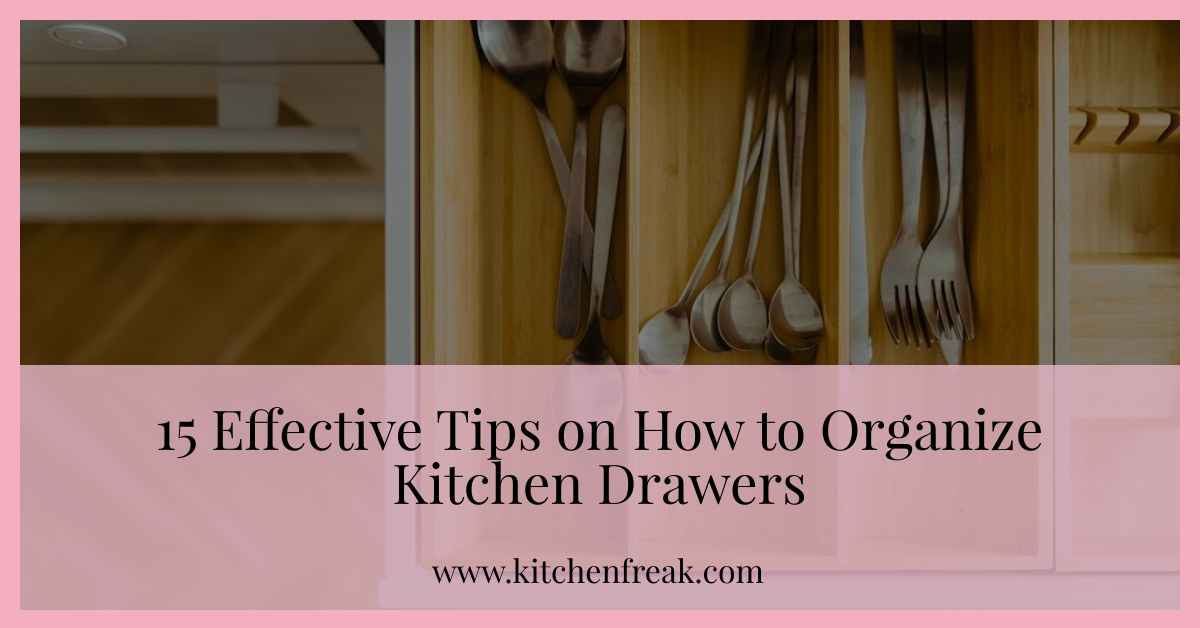Table of Contents
What should I keep in my kitchen drawers
Avoid overfilling your kitchen cabinets, even if space is limited. Instead, consider storing designated “drawer items” elsewhere to free up space. Assess the range of sizes available in your drawers and allocate items accordingly. Slim drawers work well for storing cutlery, utensils, napkins, tea towels, and table linens. Bespoke inserts are useful for neatly organizing smaller and awkward items such as coffee pod refills, spice jars, foils, and films. Deeper drawers are suitable for larger items like pots, pans, chinaware, and electrical cooking equipment such as blenders and smoothie makers. Vertical storage between drawer organizer can be utilized for baking trays, chopping boards, and casserole dishes to save space. Additionally, with proper kitchen drawer organization, food can also be stored in kitchen cabinets. Decanting packaged goods into airtight glass containers makes it easier to see the available items and minimizes the risk of spillage. To begin the process of organizing your kitchen cabinet, follow these tips:1. Empty out all of the drawers
Start with a clean slate by removing everything from your drawers. This not only physically clears the clutter but also helps clear your mind. If you have a large kitchen table, place all the contents there for sorting. Int his way, you will have everything in front of you to decide which stuff go where.2. Clean kitchen drawers
Wipe down the drawers and cabinets, ensuring they are free from dust and grime. Leave the drawers and cabinets open after cleaning to visualize the space better.3. Sort and purge
Create categories for similar items and group them together. Keep all the large cooking utensils in one place, pots and pans together, bakeware in another category, and so on. Take this opportunity to get rid of items you haven’t used in the past year to declutter your kitchen.4. Zone drawers to suit your workspace
Consider your kitchen workflow and position drawers accordingly. For example, store pans and utensils next to the range or cook top, keep glassware in drawers near the kitchen island, and organize chinaware near a clear countertop if you enjoy entertaining. Use organizer to separate cutlery and glassware from the main cooking area. This way, different tasks can be performed harmoniously in your kitchen.5. Dedicate deep drawers to pots and pans
Opt for wide drawers to conveniently organize your kitchen utensils, such as pots and pans in one accessible space. This is more efficient than searching through the back of a cabinet, especially when you use them daily. To prevent scratching and rattling, consider installing an internal pan rack or using pan protectors. Consult with a kitchen designer for customized options.6. Get drawer inserts for kitchen
Consider incorporating bespoke inserts for organizing spices in your kitchen drawers. These specialized drawers inserts can hold and organize items like spice jars, chopping boards, knife blocks, and coffee pod refills. They not only enhance the neatness and tidiness of your drawers but also make it easier to locate items quickly, leading to a smoother cooking experience.
7. Dedicate a drawer or two for kids stuff
It’s unlikely that your children will have the same desire to keep the kitchen clean as you do. To address this, make sure to separate their utensils, plates, and other items from the rest of your kitchen supplies. An ideal place for these items would be a low drawer where the kids can play while you cook.8. Divide and conquer
For shallow utensil drawers, use kitchen organizers to avoid rummaging through the contents. Measure the inside dimensions of each drawer, including height, width, and depth, to maximize storage space effectively. Separate sections by category, such as knives, cutlery, peelers, and baking equipment. Adding labels can provide extra clarity and help maintain an organized system.9. Clear the counter clutter
Instead of organizing goods on your kitchen countertop, keep them hidden in the drawers below. For instance, a charming tea bar in a home features a neat countertop with only a kettle on display, while everything else needed for tea time is stored in the drawer below.10. Storing food in kitchen drawers
To keep food storage clear in your kitchen cabinets, similar to organizing a refrigerator or pantry, decant dried foods into labeled and transparent containers. This not only helps in easily locating what you need but also allows you to see when essential items are running low, enabling you to add them to your grocery list as needed. Using this method prevents packets from opening and spilling everywhere. Additionally, organizing Tupperware near the kitchen drawers can save time when it comes to temporary food storage. You can make it a junk drawer as well.
11. Roll it off
If hotel suites can make it work, so can your kitchen drawer! Rolling your kitchen towels makes them easily accessible without getting the rest of the drawer dirty. It also prevents towels from slipping off the top of a stack and falling behind the drawer, avoiding drawer jams.
12. Store water bottles in kitchen drawers
Some kitchens may lack drawer space, while others have plenty to spare. If you fall into the latter category, get creative! For example, you can use kitchen drawers to store and organize your water bottles.
13. Organize the kitchen drawers upright
A practical solution for quick and easy access to utensils is to store them upright. Instead of using jars on the countertop, utilize a deep and narrow drawer (preferably near the stove top) by fitting containers inside. This arrangement is useful for storing cutlery as well as longer utensils like rolling pins, wooden spoons, and whisks. Simply grab what you need and slide the containers out of view. Similarly, you can store baking trays and chopping boards vertically by installing tall drawer dividers.
14. Storage containers and baskets for kitchen drawers
Similar to clear plastic bins, storage baskets like the ones shown below can assist in quickly sorting foods and providing a clear view of everything. For items that may leave dirt or debris, such as potatoes and onions, transparent cubbies are a good choice for easy clean-up. Bagged items can be stored in either baskets or clear containers.
15. Label the kitchen drawers
Another useful tip from Neat by Meg is to label your drawers with the corresponding utensils or items that belong in each section. For a utensil drawer, you might have categories like tongs, spatulas and spoons, and measuring cups. This clever kids’ cupboard includes helpful labels such as bottles and bibs.
FAQs
Q: What are some effective tips for organizing kitchen drawers?
A: Effective tips for organizing kitchen drawers include using drawer dividers, drawer organizers, and drawer liners, decluttering regularly, and finding the right storage solutions for specific items such as spices, utensils, and cutlery.Q: How to organize deep kitchen drawers?
A: To organize deep kitchen drawers, consider using expandable utensil organizers, bamboo drawer dividers, and shallow drawer organizers to efficiently utilize the space and keep items organized and easily accessible.Q: What are the best ways to organize a spice drawer?
A: The best ways to organize a spice drawer include using spice drawer organizers, labeling spice containers, and arranging the spices based on usage frequency or alphabetical order for easy access and quick identification.Q: What is the importance of drawer organization in the kitchen?
A: Drawer organization in the kitchen is important as it helps in maximizing storage space, keeping items neatly arranged, enhancing accessibility, and creating an efficient and tidy cooking environment.Q: How can I effectively organize my kitchen drawers without spending a lot?
A: You can effectively organize your kitchen drawers without spending a lot by utilizing DIY drawer organization ideas, repurposing containers or boxes as drawer organizers, and exploring cost-effective storage solutions such as bamboo or plastic dividers.Q: What are some essential kitchen items that can be organized in drawers?
A: Essential kitchen items that can be organized in drawers include cutlery, kitchen towels, utensils, spice containers, knife blocks, food storage containers, and various cooking gadgets to streamline cooking and meal preparation.Q: How to maintain the organized layout of kitchen drawers?
A: To maintain the organized layout of kitchen drawers, make it a habit to put items back in their designated places after use, declutter regularly, and consider investing in drawer organizers that help keep items tidy and easily accessible.Q: What are some effective drawer organization systems for kitchen remodel projects?
A: Effective drawer organization systems for kitchen remodel projects include using custom cabinet organizers, deep drawer dividers, and adjustable bamboo drawer organizers to create a tailored and efficient storage solution that complements the overall kitchen design.Q: How to efficiently organize a junk drawer in the kitchen?
A: To efficiently organize a junk drawer in the kitchen, consider using small storage trays or dividers, decluttering unwanted items, and categorizing similar items together to maintain a sense of order within the drawer.Q: What are some creative ways to maximize space in kitchen drawers?
A: Some creative ways to maximize space in kitchen drawers include using stackable storage containers, installing drawer organizers that can be adjusted to fit different item sizes, and using drawer dividers or trays to create separate compartments for various kitchen essentials.Anum Basit, the organizing maven and cleaning aficionado behind KitchenFreak, is a devoted stay-at-home mom with a knack for turning chaos into calm. With a passion for writing and a decade of hands-on experience managing a busy household, Anum has cultivated a deep understanding of space utilization, effective cleaning techniques, and sustainable maintenance practices. Her home has become her laboratory, where she experiments with different strategies and shares her findings on her blog.
KitchenFreak began as a way for Anum to document her journey towards creating a clutter-free, easy-to-maintain, and clean kitchen. Today, it’s a go-to resource for fellow parents and homemakers seeking practical advice on kitchen organization, maintenance, and cleaning hacks.
Anum’s expertise isn’t confined to theory; it’s steeped in real-life trials, errors, and triumphs. From discovering the best ways to organize a pantry to finding child-friendly cleaning supplies, Anum’s advice comes from her lived experiences.
Through KitchenFreak, Anum aspires to help others uncover the joy of a well-organized kitchen. Her aim is to inspire, educate, and empower her readers, showing them that no matter how messy things may get, creating a spotless kitchen is possible, one step at a time.

